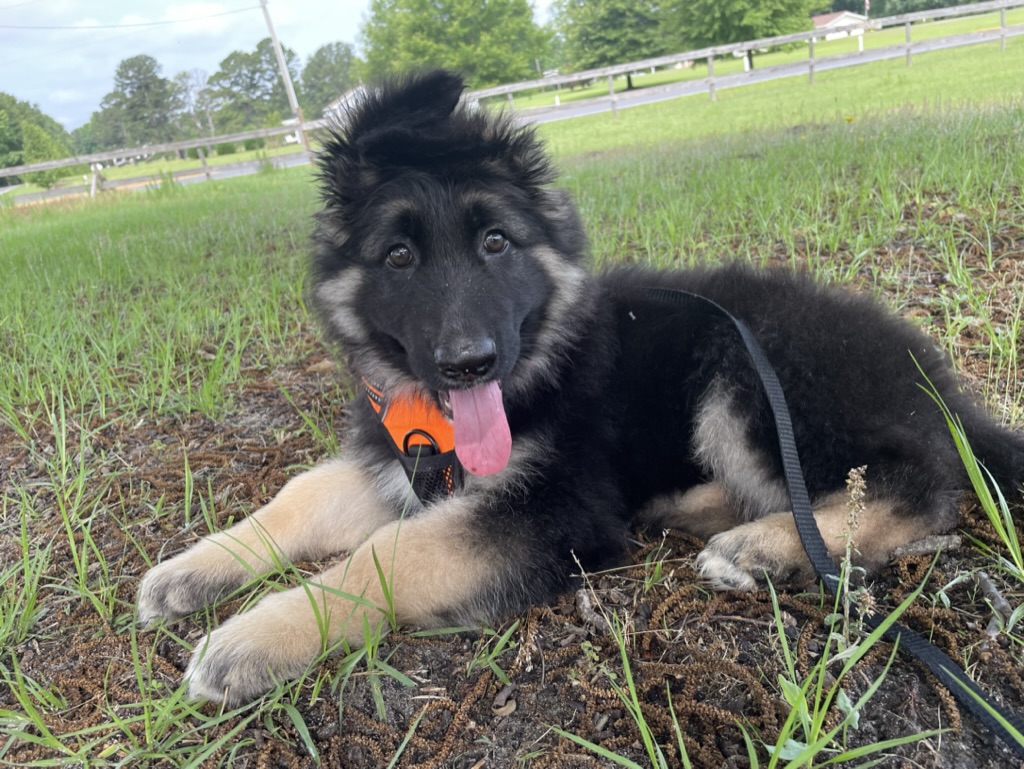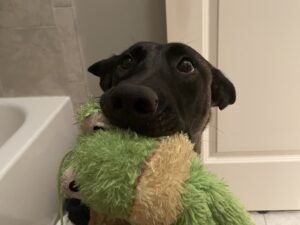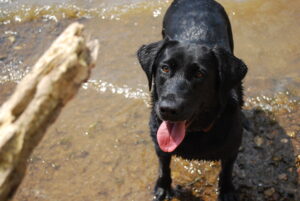Many of you may remember learning about the order of operations in math class – PEMDAS stands for Parentheses, Exponent, Multiplication, Division, Addition, Subtraction. If you solved a problem out of order, you’d end up with a hot mess of an answer. In dog training, the order we do things in is equally important. A disordered training scenario can create endless headache for both you and your dog. Thankfully, the acronym in dog training is much simpler!
There are three major components of an operant conditioning sequence – Antecedent, Behavior, and Consequence.
ABC: Antecedent, Behavior, Consequence
An Antecedent (cue) is the signal, command, or trigger that prompts the Behavior to happen. The Consequence is what drives the behavior and is the overall cause of it.
In reinforcement-focused training, most of our antecedents are cues and consequences are reinforcement (or rewards).
Always give your antecedent before the behavior starts and the consequence after the behavior is complete.
Always give your cue before the behavior starts and the reinforcement after the behavior is complete.
Everything that happens consistently before a behavior becomes part of the antecedent / cue.
- Do you have cookie hands when you ask your dog to sit? If so, those are now part of your Cue.
Everything that happens consistently1 between the Cue and Reinforcement becomes part of the Behavior.
- Practice makes permanent, and you get what you reinforce. If you don’t love the behavior, avoid reinforcing it.
Everything that happens consistently after a behavior becomes part of the consequence.
- Do you give your dog a treat for recall, then leash him up to leave the park? Congratulations, leaving the park has entirely negated the value of your measly treat – be prepared for your recall to wither away.
Teaching a Behavior with Multiple Cues
Dogs tend to be quite good at specializing, and not quite so good at generalizing. This means that at first, your dog may think that he should only sit if you are standing in front of him, in your living room, facing east, in the afternoon, holding a training treat in front of his face in a fist, raising your hand with the treat, and saying “Sit!” at the same time. We have to communicate to our dog that “Sit!” is the important part, and to disregard person, time, place, treat presence, treat quality, and any hand movements. We can use sequencing to help our dog understand.
Dogs are anticipatory and efficient. Generally, they want to take the shortest, most efficient route possible to the outcome they desire. So let’s make it easy for them! To help your dog differentiate cues they can ignore versus cues that are a necessary part of the pattern, we are going to put them in order:
New Cue –> Old Cue –> Behavior –> Reinforcement
For example, in teaching a dog to sit, you might use a lure in this sequence: pinched fingers in front of your dog’s face, raise hand until butt hits the ground, mark and reward. To put the behavior on a verbal cue, you would say “Sit!” 1-2 seconds before you began to lure them.
New Cue –> Old Cue –> Behavior –> Reinforcement
“Sit!” –> [Lure] –> Dog sits –> “Yes!”
After enough reps, your dog will understand that the word “Sit!” is always followed by you luring them into a sit. If they anticipate this and begin to sit before you get a chance to lure them – reinforce them heavily!
Complex Behaviors & Behavior Chains
We can use the same sequencing above to create a behavior chain – several behaviors that are taught individually then pieced together and assigned to a single cue. Examples include many party-trick behaviors like retrieving a beer from the fridge, or sticking paws up before “Bang!” and playing dead. Seemingly simple behaviors can also be short chains – going to a bed and laying down, or playing a game of fetch.
There are a myriad of ways to teach a behavior chain, but the common theme is teaching the individual aspects separately, then putting them together in order. You can’t expect your dog to understand a fridge retrieval before he understands how to open and close the fridge, and he’s not going to grab a specific thing until he knows how to identify it and actually carry it effectively.
Unintentional behavior chains are a scourge for many dog owners. An extremely common one is a dog jumping on you enthusiastically before sitting like a pro, typically achieved by teaching a dog to sit after he has already started jumping, and rewarding him for it.
- Or significantly. Superstitious behaviors are parts of a behavior that your dog believes is an essential piece of what is being cued and reinforced, but in reality is incidental and unnecessary. Usually they happen after only one particularly reinforcing repetition. ↩︎



